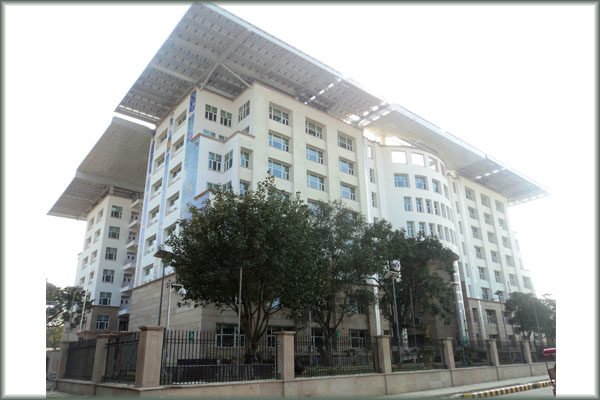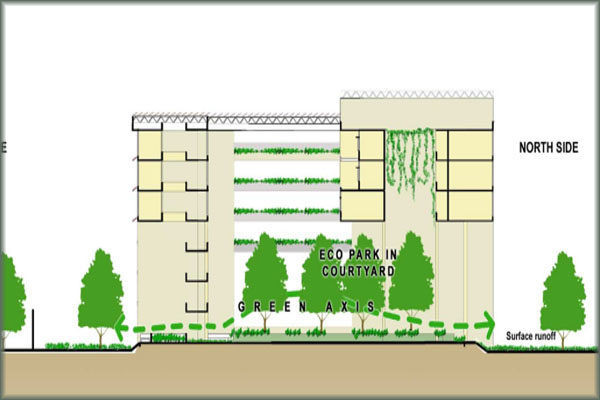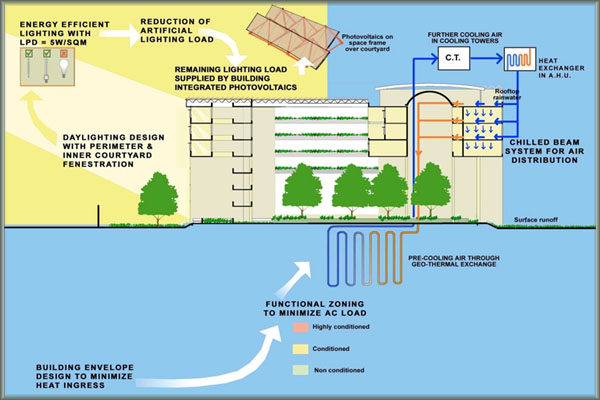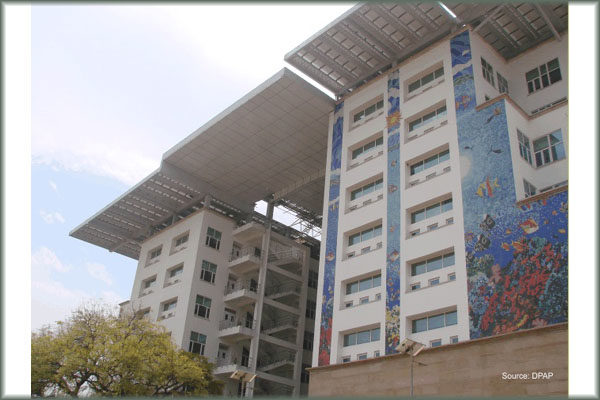Indira Paryavaran Bhawan
Ministry of Environment and Forest (MoEF)
Energy Efficient Design Features
Summary
| Location | New Delhi |
| Geographical coordinates | 28° N, 77° E |
| Occupancy Type | Office (MoEF) |
| Typology | New Construction |
| Climate Type | Composite |
| Project Area | 9,565 m2 |
| Grid Connectivity | Grid connected |
| EPI | 44 kWh/m2/yr |
Introduction
Indira Paryavaran Bhawan, the new office building for Ministry of Environment and Forest (MoEF) sets is a radical change from a conventional building design.
The project team put special emphasis on strategies for reducing energy demand by providing adequate natural light, shading, landscape to reduce ambient temperature, and energy efficient active building systems. Several energy conservation measures were adopted to reduce the energy loads of the building and the remaining demand was met by producing energy from on-site installed high efficiency solar panels to achieve net zero criteria. Indira Paryavaran Bhawan uses 70% less energy compared a conventional building. The project adopted green building concepts including conservation and optimization of water by recyclingwaste water from the site.
Indira Paryavaran Bhawan is now India’s highest green rated building. The project has received GRIHA 5 Star and LEED Platinum. The building has already won awards such as the Adarsh/GRIHA of MNRE for exemplary demonstration of Integration of Renewable Energy Technologies.





